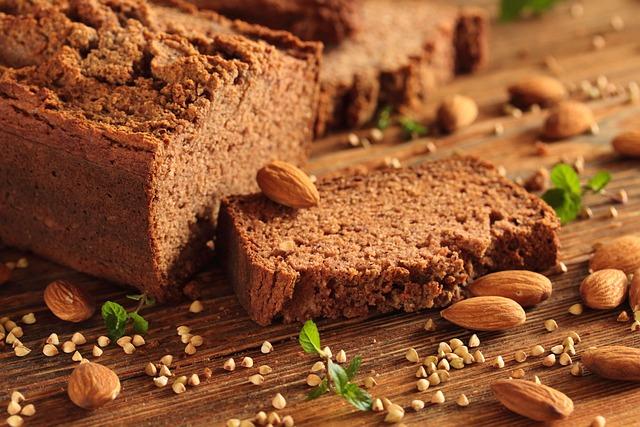In the realm of baking, where floury clouds dance and sugar crystals shimmer, there exists a sweet symphony that beckons to be mastered: the art of baking gluten-free cookies. For those who embark on this culinary adventure, the journey is paved with delicious possibilities, promising a world where dietary restrictions transform into delectable delights. Picture a kitchen filled with the warm embrace of vanilla and the comforting aroma of cookies fresh from the oven, each bite a testament to the power of creativity and resilience. Whether you’re a seasoned gluten-free baker or a curious newcomer, this guide will illuminate the path to achieving cookie perfection, proving that the absence of gluten is not a barrier but a gateway to new, scrumptious horizons. So, don your apron, ready your mixing bowl, and let’s dive into the joyful pursuit of crafting cookies that are as delightful as they are gluten-free.
Choosing the Right Flour Blend for Your Gluten-Free Delight
Creating the ultimate gluten-free cookie begins with selecting the perfect flour blend. The right combination can transform your cookies from a crumbly mess to a chewy, delightful masterpiece. Here’s what to look for when choosing your flour:
- Rice Flour: A staple in gluten-free baking, it provides a light texture and is best combined with other flours for balance.
- Almond Flour: Known for its nutty flavor and moisture, almond flour adds richness and depth, making your cookies irresistibly soft.
- Tapioca Flour: This flour is a secret weapon for achieving a chewy texture and helps bind your ingredients together.
- Sorghum Flour: Offers a mild sweetness and acts as a great base for most gluten-free cookie recipes.
- Coconut Flour: Though highly absorbent, when used sparingly, it adds a unique flavor and a hint of sweetness.
Experimenting with these flours, either alone or in combination, can lead you to your perfect gluten-free cookie blend. The key is to maintain a balance of texture and flavor while ensuring that your cookies hold together beautifully. Happy baking!

Mastering the Art of Moisture Balance in Cookie Dough
Achieving the perfect moisture balance in gluten-free cookie dough is akin to mastering a culinary symphony. The delicate dance between wet and dry ingredients can transform your cookies from crumbly to blissfully chewy. Here are some essential tips to ensure your cookies remain soft and delightful:
- Choose the Right Flour: Opt for a blend of gluten-free flours, such as almond or coconut flour, which naturally retain more moisture compared to traditional wheat flour.
- Incorporate Binding Agents: Use xanthan gum or psyllium husk to mimic gluten’s binding properties, ensuring your dough holds together beautifully.
- Don’t Skimp on Fats: Butter or coconut oil are your allies, contributing to a moist texture. Be generous but measured to avoid a greasy outcome.
By understanding these elements, you can craft cookies that not only meet gluten-free standards but also surpass the expectations of even the most discerning cookie connoisseurs.
Secrets to Achieving the Perfect Texture and Flavor
Crafting gluten-free cookies with the ideal texture and flavor is a delightful journey into the art of baking. The secret lies in the right blend of ingredients and techniques. Embrace alternative flours like almond or coconut flour for a rich, nutty undertone, or opt for oat flour for a softer, more traditional feel. To enhance moisture and binding, consider incorporating ingredients like applesauce, mashed bananas, or even a touch of Greek yogurt. These not only add a delightful depth of flavor but also ensure your cookies remain tender and chewy.
- Leavening agents: Use a combination of baking soda and cream of tartar to achieve the perfect rise without the gluten structure.
- Sweeteners: Experiment with natural options like honey or maple syrup to infuse your cookies with a subtle sweetness and caramel-like flavor.
- Chilling the dough: Allowing the dough to rest in the fridge for at least 30 minutes can work wonders in developing the flavors and achieving a desirable texture.
Baking at the right temperature is crucial. A slightly lower oven temperature ensures that your cookies bake evenly, allowing the flavors to meld beautifully without over-browning. With a dash of creativity and a sprinkle of patience, your gluten-free cookies will emerge from the oven as scrumptious masterpieces, each bite a testament to your baking prowess.
Tips for Baking Consistency and Preventing Crumbles
Achieving that perfect texture in gluten-free cookies can feel like a magical feat, but with a few clever tweaks, you can bake cookies that are delightfully consistent and free from crumbles. The secret lies in understanding the unique properties of gluten-free flours and how they interact with other ingredients. Here are some essential tips to ensure your cookies turn out just right:
- Mix Your Flours: Use a combination of gluten-free flours such as almond, coconut, and rice flour. This blend can create a more balanced texture, preventing cookies from becoming too dry or crumbly.
- Don’t Overmix: Overmixing the dough can introduce too much air, leading to fragile cookies. Stir just until the ingredients are combined for a tender, consistent texture.
- Use a Binder: Ingredients like xanthan gum or psyllium husk act as a binding agent, helping to hold your cookies together. Just a small amount can make a big difference.
- Chill the Dough: Refrigerating the dough for at least 30 minutes before baking helps the cookies maintain their shape and enhances their texture.
- Moisture Matters: Gluten-free doughs often require more moisture. Add an extra egg or a tablespoon of milk to ensure your cookies don’t dry out during baking.
By experimenting with these strategies, you’ll soon be crafting gluten-free cookies that rival their gluten-filled counterparts, both in taste and texture. Happy baking!



